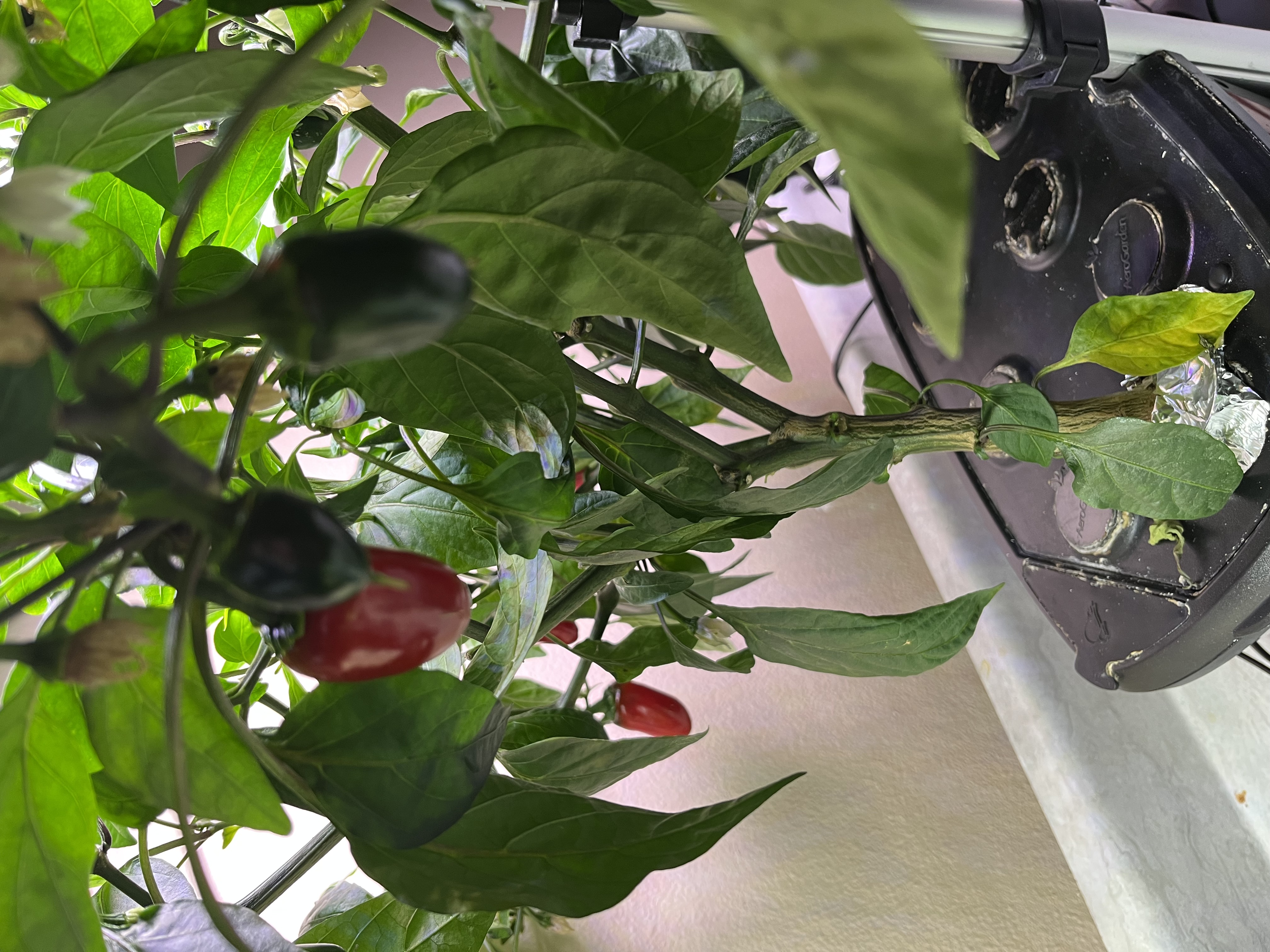Growing Jalepanos indoors
If you're a fan of fresh jalapenos and want to enjoy them year-round, then growing jalapeno plants during the winter months can be a great idea


If you're a fan of fresh jalapenos and want to enjoy them year-round, then growing jalapeno plants during the winter months can be a great idea. Jalapeno peppers have a long lifespan, which makes them an ideal plant to have fresh jalapenos available throughout the year. Thanks to hydroponic countertop systems like the AeroGarden, it's possible to create an ideal environment for growing peppers year-round right in the comfort of your own kitchen. In this blog post, we'll explore the benefits of growing jalapenos in the winter and share tips on how to do it successfully.
Materials Needed:
1. Jalapenos pepper seeds
2. Grow sponges (from Aerogarden or Park Seeds)
3. Nutrient Solutions (from AeroGarden’s nutrients or General Hydroponics or Fox Farm)
4. CalMag Nutrient Solution
5. AreoGarden Bounty or Farm XL
6. Aluminum foil
7. Garden Shears
8. Q-Tips
9. Optional Digital TDS-Meter to check EC, PPM & PH
Growing Jalapeños indoors requires some dedicated effort, as the plants require consistent attention to nutrient levels and frequent pruning. However, the hard work will be worth it as you can expect a bountiful harvest of Jalapeños in just 10-12 weeks.
Germination phase (week 1) The first step to growing your own jalapeño plant is the germination phase. Begin by planting a couple of seeds in a growing sponge and placing the grow basket in your countertop hydroponic system. Cover the sponge with aluminum foil, making a hole in the center about the size of a Sharpy pen. Add the appropriate nutrients, either AeroGarden’s nutrients or General Hydroponics or Fox Farm. Hydroponic systems provide ideal conditions for seeds to sprout, with sprouts typically appearing within 2-5 days instead of the typical 7-14 days outdoors. If your seeds do not sprout after 14 days, try planting again.
Seedling phase (weeks 2-3)
During the seedling phase, your tomato plant will start to grow its first true leaves and will become more established in the hydroponic system. This is also the time to thin out any weaker seedlings if you planted more than one seed. It's important to give your tomato plant enough space to grow and develop a strong root system, and having multiple plants in one container can lead to overcrowding and competition for nutrients. In addition, you should continue to monitor and adjust the nutrient levels in your hydroponic system. Ideal nutrients levels are EC/PPM: 3.0-3.5 EC / 2100-2450 PPM and pH range between 6.0 - 7.0
Early growth phase (weeks 4-7)
During the early growth phase of the jalapeño plant (weeks 4-7), it's important to flush the water system. You can remove the tray from the hydroponic system without hurting the plant since it's still small. Empty the water and give the reservoir a quick clean before refilling it with fresh water and adding nutrients.
The ideal range for nutrient levels is between 3.0-3.5 EC / 2100-2450 PPM, and the pH should be between 6.0 - 7.0. If the leaves start turning yellow, it's a sign that the nutrient levels are too low. Check the levels with a TDS meter and add more nutrients if necessary.
Pruning
The jalapeño plant can quickly outgrow the AreoGarden, pruning is necessary. You should start pruning once the plant reaches 12-15" in height. Keep the main stem intact, and prune alternate shoots and excess leaves every 2-3 weeks.
Flowering Phase (weeks 7-9)
To prevent tip burn and blossom rotting, add CalMag nutrients to the water. Since bees aren't present to pollinate the flowers, you'll have to do it yourself. You can use a Q-tip to gently brush the inside of the flower in a circular motion. Be gentle since the jalapeño plant flowers are fragile.
Fruiting Phase (weeks 10-12+)
it's time for another system flush. However, removing the top tray may damage the plant. To avoid this, use a turkey baster to remove all the water. After emptying the reservoir, refill it with fresh water and add nutrients and CalMag.
Harvesting (weeks 12+)
Jalapeños will turn from bright green to dark green to bright red. Traditionally, they are picked when they turn dark green. Another way to tell when they're ready to harvest is to look for corking, which is the small white lines on the pepper skin.
Keep repeating the steps in the fruiting and harvesting phases. It is common for a Jalapeno plant to keep producing Jalapenos 250 days to a year after planting.
Companion plants
Mini Sweet Peppers
Nutrient & PH
- PPM range of 2100-2450
- pH range of 6.0-7.0
In conclusion, growing jalapenos in the winter months using hydroponic countertop systems like the AeroGarden can provide a year-round supply of fresh jalapenos. With their long lifespan and the ability to create an ideal growing environment right in your own kitchen, anyone can successfully grow jalapenos throughout the year. By following the tips shared in this blog post, you can enjoy the benefits of fresh jalapenos whenever you want.